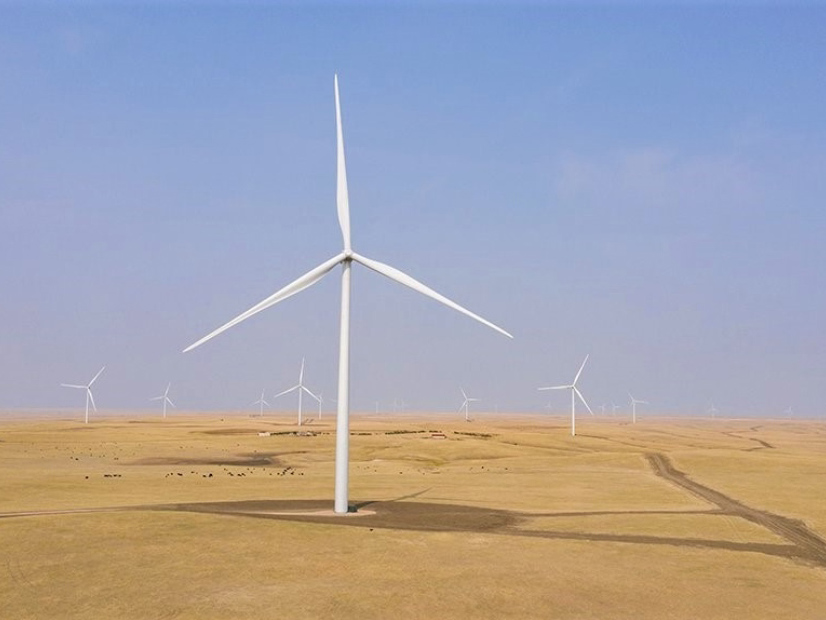Congressional advisers say that legislation that provides stability for federal tax credits is key to unlocking renewable energy growth through 2030.
“It’s our position that tax credits are an essential component of [meeting the President’s climate goals] and that generosity and the long-term nature of the credits are an essential component of that,” Alice Lin, budget and tax policy adviser for the U.S. House Ways and Means Committee, said Tuesday during the American Council on Renewable Energy (ACORE) Finance Forum.
The GREEN Act of 2021 (H.R.848) currently before the Ways and Means Committee provides for five-year extensions of the current investment tax credit (ITC) at the full 30% value and the production tax credit (PTC) at the current phaseout level of 60%. Another bill — the Clean Energy for America Act (CEAA) — before the U.S. Senate Committee on Finance contains a similar goal but approaches it through emissions-based provisions. It allows zero-emission facilities to choose a PTC of 2.5 cents/kWh or ITC at the full 30% value.
“Returning [tax credits] to their full value is a low-hanging-fruit type of approach that we can take to really drive deployment,” Bobby Andres, senior policy adviser for the Senate Finance Committee, said.
In addition, President Biden’s recently released budget proposal would extend the ITC and PTC through 2031. (See Clean Energy Wins, Fossil Fuels Lose in Biden Budget.)
“We all agree that the start and stop on clean energy tax credits is not really helping anyone, and it’s making us less competitive, so that’s why we want to create long-term certainty so that energy companies can actually get projects built, which is what the [President’s] plan is about,” Candace Vahlsing, associate director of climate, energy, environment and science at the U.S. Office of Management and Budget, said.
Legislators, however, see tax credit extensions as one tool among many that will be necessary to expand renewables at the requisite pace and scale.
The GREEN Act and CEAA also include a direct pay function designed to overcome market realities, such as the pandemic, that have negatively affected the tax equity market.
“Tax equity is going to be stressed, and one thing that I think is celebrated among all of these proposals is a recognition that a direct payment option is going to be helpful for the people trying to build out the clean energy economy,” ACORE COO Bill Parsons said.
Unlike the current tax equity structure, direct pay allows developers to treat tax credits like a payment on their tax returns, eliminating any connection to tax liability.
CEAA allows taxpayers to receive 100% of the ITC or PTC value as direct payment, while the GREEN Act is currently at 85%.
“As we have come into this political moment … I think we have increasingly found that direct pay is a pivotal piece of the puzzle in order to ensure that as we make investments … we are not constrained by any limits upon the market to ensure that we meet our climate goals,” Lin said.
Storage and Transmission
The GREEN Act and CEAA have a 30% ITC for free-standing energy storage. In addition, the CEAA includes a 30% transmission ITC that is not in the GREEN Act. Another bill, the Electric Power Infrastructure Improvement Act (S.1016/HR2406) also has a 30% transmission ITC for projects above 275 kV and capacity of at least 500 MW.
The tax credit for transmission is relatively new and likely will evolve, according to Andres.
“It is not going to solve all the issues we have with transmission deployment, but it’s something we feel is additive and useful,” he said.
A similar credit could be added to the GREEN Act, Lin said.
“We are looking very closely at the same ways to ensure that [transmission] is targeted, and we are very interested in the potential of helping to unlock the true potential for renewables,” she said.
Clean Energy Standard
The pathway to passage of a clean energy standard is not clear, but work is underway to make it happen.
How tax credits interact with a federal standard is “going to be an important piece of the debate going forward,” Andres said.
The CLEAN Future Act (H.R.1512) would require 100% of U.S. electricity to be zero-emission by 2035.
It passed out of the House Energy and Commerce Committee, but the Senate has a “more complicated dynamic on a clean energy standard,” ACORE CEO Gregory Wetstone said.
There is a growing movement to pass a standard through the budget reconciliation process.
“In the end, it’s going to be up to the parliamentarian to rule on what fits there and up to our allies in the Senate to craft a version of the clean energy standard that is budget-based and can pass that test,” he said. (See 100% Clean Power by 2035 Needs Energy Standard with a Twist.)



